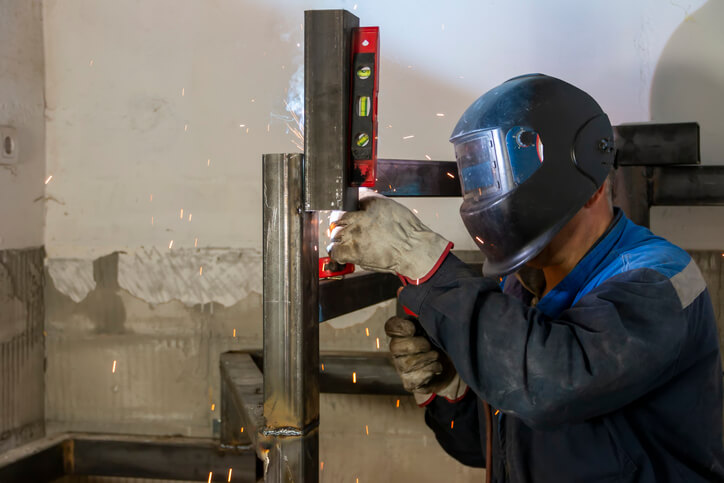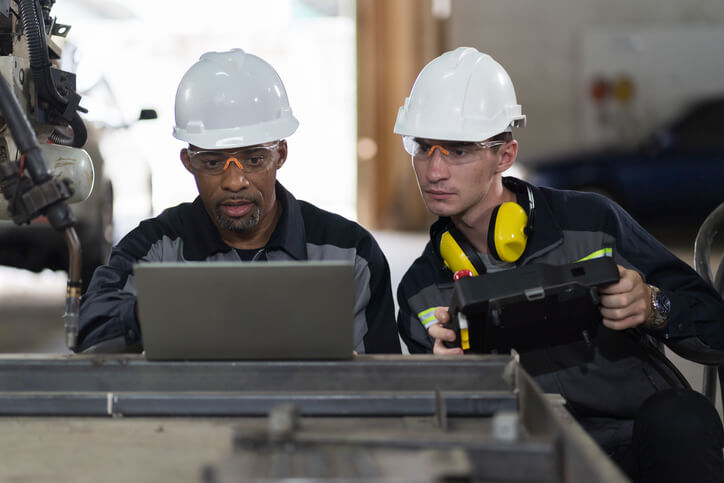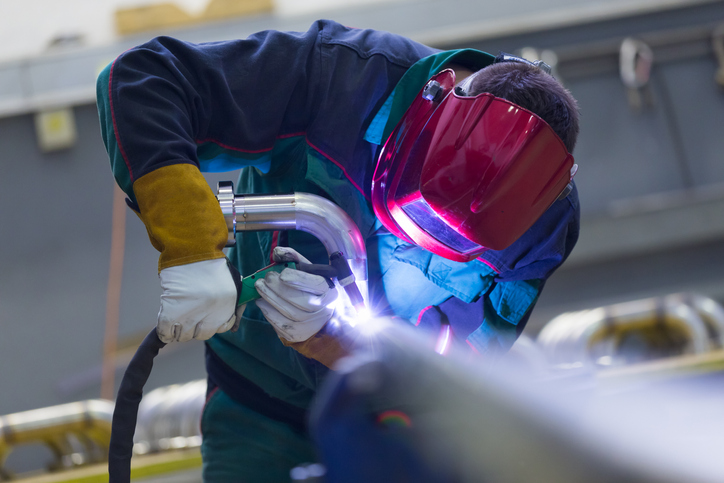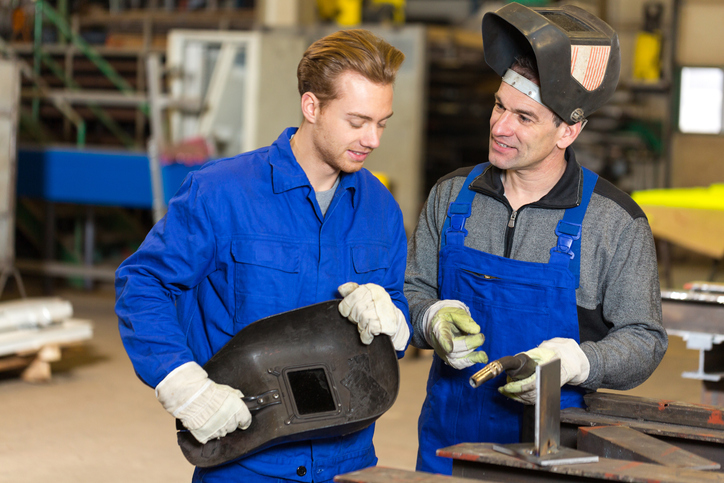Tag: welder diploma program

When people think about welding, they often picture sparks flying and skilled technicians working with their hands. While manual dexterity and practical skills are undoubtedly crucial in welding, you might be surprised to learn that math plays a vital role in this profession as well.
Mathematics provides the foundation for understanding welding processes, measurements, and calculations, making it an essential skill for those completing welder training. Welders, particularly professional ones, need to possess a strong understanding of various mathematical concepts, including fractions, decimals, geometry, volume, and area. This knowledge is crucial because welding demands exceptional precision to ensure the structural integrity of the resulting welds, especially in applications involving high-pressure vessels.
In this blog post, we will explore the significance of math in welding and why it is essential for aspiring welders to develop a strong mathematical aptitude.
Accurate Measurements and Calculations and Material and Alloy Comprehension
Welding requires precision and accuracy in measurements. From determining the length and angle of a joint to calculating the appropriate welding parameters, accurate measurements are critical to ensuring structural integrity and weld quality. Math skills enable welders to interpret blueprints, understand dimensions, and make precise calculations. Whether it’s determining the required material quantities, calculating heat inputs, or evaluating welding tolerances, math helps welders execute their work with precision and efficiency.

Understanding the properties of different materials and alloys is paramount to welding. Math provides the necessary foundation for comprehending these properties and their behaviour under various welding conditions. Equations related to material strength, thermal expansion, and mechanical properties assist welders in selecting the right welding technique and parameters for a given application. This knowledge helps prevent material distortion, cracking, and other welding defects that can compromise the quality of the weld.
Blueprint Interpretation Made Easy
Blueprints are a universal language in the welding profession. They provide welders with essential information regarding joint design, weld symbols, and dimensions. Proficiency in math allows welders to interpret blueprints accurately, identify critical dimensions, and plan their welding processes accordingly. Understanding geometric shapes and angles is particularly important when working with complex joint configurations. Welders with mathematical proficiency can accurately analyze the blueprint’s information, apply mathematical principles such as trigonometry, and determine the exact angles and dimensions needed for the welds. This attention to detail and mathematical precision ensures that the welds fit precisely, maintaining the desired structural integrity.

Problem Solving and Troubleshooting Made Easy After Welder Training
Welding often presents challenges that require problem-solving skills. Math, in addition to their welder training, equips welders with the ability to analyze complex situations, apply logical reasoning, and devise effective solutions. For instance, when encountering irregular joint configurations, welders can use math to determine the correct angles and dimensions for their welds. In addition, math proficiency allows welders to troubleshoot welding defects by identifying potential causes and making adjustments to welding parameters.
Mathematics provides a systematic framework for welders to approach challenges, encouraging a methodical and analytical mindset. It enhances their ability to understand the underlying principles of welding processes, enabling them to make informed decisions and take corrective actions when necessary.
Prepare for a Successful Welding Career Through Welder Training With NATS!
The Structural and Pressure Vessel Welder Diploma Program at North American Trade Schools (NATS) is a comprehensive program that provides students with the essential knowledge and practical skills needed to excel in the field of welding. Through hands-on training, students learn various welding techniques, safety protocols, blueprint reading, and welding symbols. The program’s curriculum is designed to meet industry standards and prepare graduates for entry-level welding positions. With experienced instructors, state-of-the-art facilities, and a focus on real-world applications, the welder diploma program at NATS equips students with the expertise and confidence to pursue rewarding careers in welding, contributing to their professional growth and success.
Are you looking for a world-class welder college?
Contact NATS for more information.
A Day in the Life of an Apprentice Boilermaker After a Welder Diploma Program
February 10, 2023
Boilers are large pressure vessels that create steam for energy. This energy is used to create paper, process foods, and generate electricity. Specialized welding skills are needed for the construction, installation, maintenance, and repair of boilers, and if you’re considering welding training, a boilermaker role could be a good option. After completing a reputable welding program, you’ll need to finish an apprenticeship program, where you’ll hone your skills and make the professional connections needed to launch your career as a journeyman boilermaker.
Typically, Canadian apprenticeship programs last a total of 3 years. They usually occur in 12-month stretches between in-cass instruction periods. Students value apprenticeships because they offer them the perfect opportunity to gain hands-on experience and earn money simultaneously. Read on to learn what it might be like to complete a boilermaker apprenticeship.
Start With Safety Measures After a Welder Diploma Program
As with all occupations in the trades, boilermakers must prioritize their safety. The beginning of your day as an apprentice boilermaker is the perfect time to ensure that you’re wearing the proper personal protective equipment and that your environment is safe. Your role can expose you to several hazards, such as flying objects, dust, splashed acid, sharp objects, the sun, and heavy machinery, which can harm your eyes, head, feet, respiratory system, and skin. After completing your welder diploma program, ensure that you wear eye protection, grade 1 protective footwear, sun protection, air-purifying respirators, and high-visibility clothing. Additionally, make sure that you’re provided with a safety harness when you’re working at heights.

Aid the Construction and Installation of Boilers
One of your principal learning objectives as a boilermaker apprentice is the construction and installation of boilers. These duties require several skills that you’ll have plenty of opportunities to practice throughout your apprenticeship. Some of these skills include blueprint reading, cutting metal, fitting and welding metal together, and directing crane operators during installation and repair. After welding technician courses, you will often begin by shadowing and assisting. With time and experience you’ll be able to complete these basic boilermaker duties all on your own. In addition to construction and installation, maintenance will be another important aspect of your work as a boilermaker apprentice.

Apprentices Keep Boilers Clean as a Maintenance Practice
Boiler cleaning improves the performance of the machine. By removing limescale and soot buildup, you’re preventing heat loss, which reduces downtime for the boiler and extends its lifespan. This is a cost-effective practice that makes your role valuable to companies that save significant sums of money with your services. As a boilermaker apprentice, you will learn to conduct regular visual inspections, test the effectiveness of a boiler to determine whether it needs maintenance or replacement, and clean boilers. You will likely use cleaning solvents, scrapers, and wire brushes to complete this task.
Learn the fundamentals of welding in our state-of-the-industry facility and start your successful boilermaker career with us.
Are you ready to begin welding courses?
Contact NATS to learn how you can get started.





